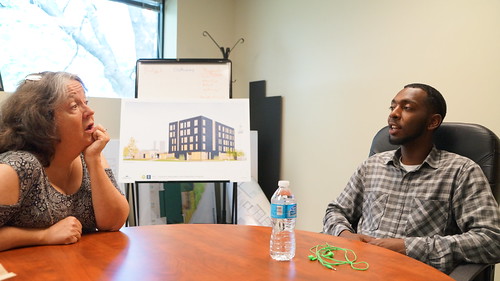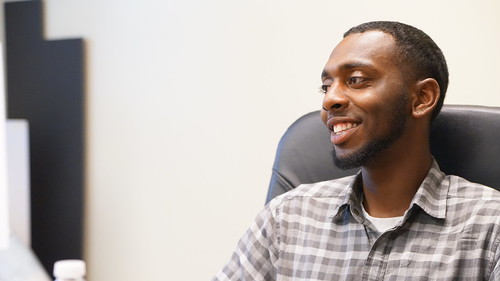YouthLink’s Springboard Fund – How $1K Can Change a Life
 Sunday, August 21, 2016 at 5:22PM |
Sunday, August 21, 2016 at 5:22PM |  Claudia Kittock |
Claudia Kittock | Story by Claudia Kittock
I met James in a conference room at YouthLink on a warm August afternoon. He had agreed to talk with me about YouthLink, his experience with homelessness, the Springboard Fund, and the impact all of it has had on his life. A soft spoken, shy man in his early 20s, James shared a compelling story of his life thus far.
James was homeless for almost 6 years. During that time he was arrested several times, most of the charges for loitering. As he explained, “When you are on the street you build walls around you to protect you from everything out there.” Finding work was difficult, but James is now working three jobs. He has moved from living on the street to living in an apartment, and is working on completing a college degree. One of his jobs is as an outreach worker for YouthLink. James walks the same streets where he once lived and talks with young people he meets. He shares his story and offers hope and help.
James finished his GED before he got to YouthLink. He attended college but found getting to class difficult. His advisors suggested that he withdraw because of his poor attendance, but didn’t explain that he would still owe the college money. James found himself in debt and unable to re-enroll until the debt was satisfied. His case worker suggested he apply to the Springboard Fund for help.
The Springboard Fund requires a plan for both self-sufficiency, life goals, and a ‘how to get there’ series of steps. James said making those goals and plan weren’t the hardest part. Believing he could actually move past this debt and have a different life seemed impossible. Remember the walls James said needed to be built around himself to stay safe? Now he says, “When someone does something nice or gives you hope, it breaks off a piece of that wall. The Springboard Fund should be called the Hope Fund!”
The money he received from the fund was used to pay off his debt to the college. Once that debt was satisfied, James enrolled in another college. He is currently attending class and successfully completing his course work.
The average 20-year-old who visited YouthLink in 2011 will impose an excess taxpayer burden of over $248,000 and an excess social burden of $613,000 over the course of her life if she remains disconnected from education and employment pathways. When these figures are applied to all youth who visited YouthLink in 2011, the lifetime excess costs would be more than $360 million to taxpayers and an excess lifetime social burden of more than $889 million. There would be $62.1 million dollars in savings to the taxpayers if just 1 in 5 YouthLink clients become self-sufficient, productive adults.
How did James find the help he needed to change his life? People at YouthLink believed in him. People at YouthLink gave him hope. They showed him what he was capable of and helped him make a plan to continue his journey. YouthLink helped him apply to the Springboard Fund, or as James would like it called, the Hope Fund.
The Springboard Fund is one of the ways to help and provide support for clients who are ready to transition from YouthLink to self-sufficiency, but still have unmet needs that are holding them back. The fund will provide up to $1000 per client and is available based on need or a particular barrier. Support is paid directly to the vendor, and may include things such as application fees for advanced training, housing deposits, transportation passes, basic professional wardrobe, etc.
This fund changes lives. It gives hope and provides a ‘spring’ for youth ready to make that final move into self-sufficiency. Donations can be mailed to YouthLink, Attn: Fund Development Office at 41 N 12th Street, Minneapolis, MN 55403, or online at http://www.youthlinkmn.org/donations/. Please write in the designation: Springboard Fund. You can make a huge difference in the life of a young person who needs that one act of kindness.
You can reach Claudia at cjkittock@gmail.com


